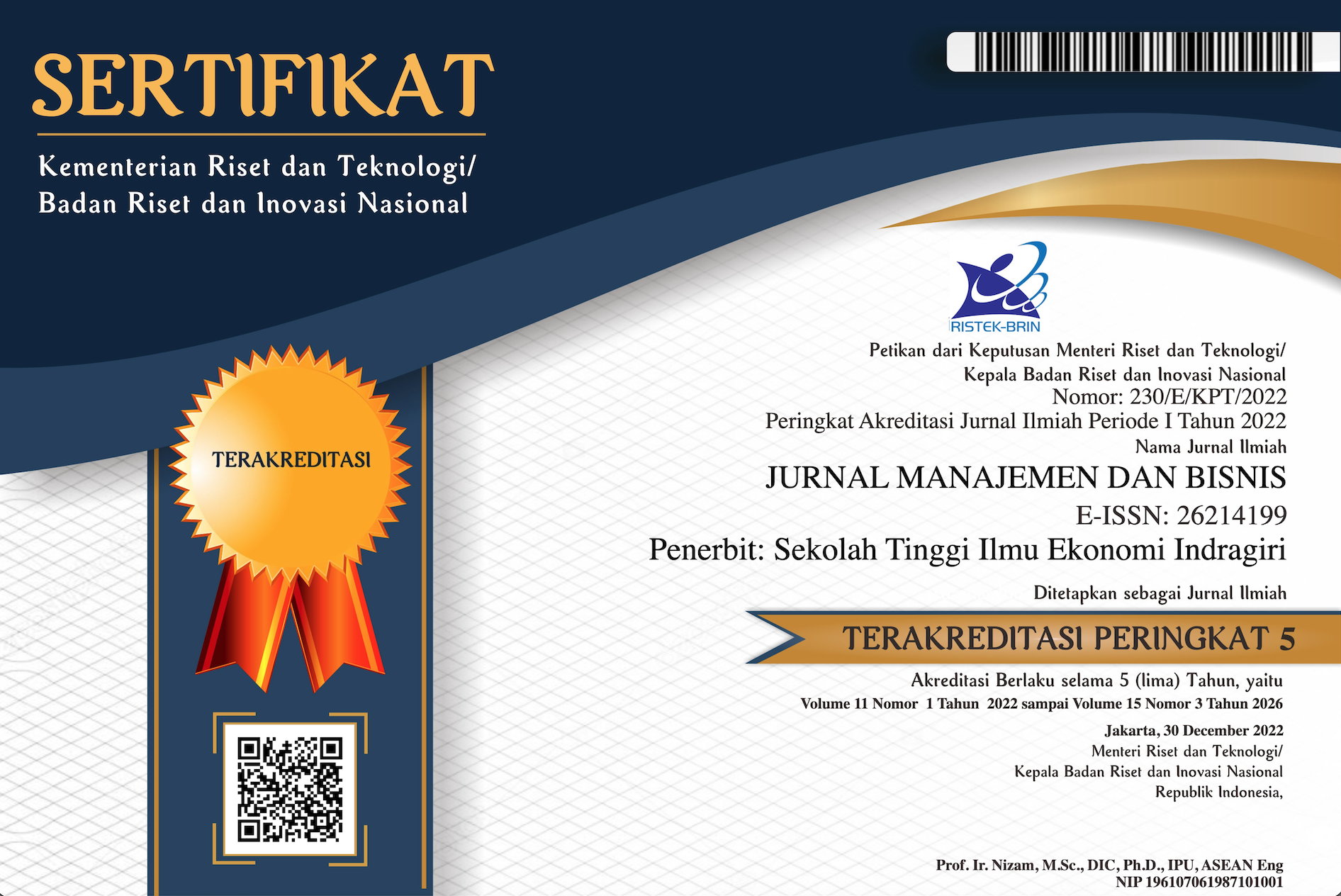ECONOMIC VALUE ADDED (EVA) AND RETURN ON ASSETS (ROA) ANALYSIS TO ASSESS FINANCIAL PERFORMANCE AT BPJS EMPLOYMENT
DOI:
https://doi.org/10.34006/jmbi.v13i1.185Kata Kunci:
Economic Value Added (EVA) and Return on Assets (ROA)Abstrak
This research was conducted at BPJS Employment. The aim of this research is to use the Economic Value Added (EVA) and ROA methods to analyze the financial results of BPJS Employment from 2018 to 2022. For this analysis, secondary data from financial reports covering 2018 to 2022 is used. EVA is very useful for use as a company performance assessor where the focus of performance assessment is on value creation. EVA will cause companies to pay more attention to their capital structure policies. BPJS Employment has been able to handle this situation effectively, as shown by studies based on EVA and ROA from available data. EVA analysis which is used to measure a company's financial performance has a good impact on the company, namely causing the company to pay more attention to capital structure policies, besides that investors can find out the company's profits and the company's ability to utilize its capital. Based on the EVA analysis carried out on BPJS Employment for the 2018-2022 period, it can be concluded that the EVA value is < 0 or EVA is negative. This means that the company does not experience the process of adding economic value. The profits generated cannot meet the expectations of the company's creditors and shareholders (investors). Meanwhile, based on the results of the ROA analysis, it shows a value below 5%, indicating the company is in an unhealthy range, and this is due to a decline in generating profits and managing assets.









